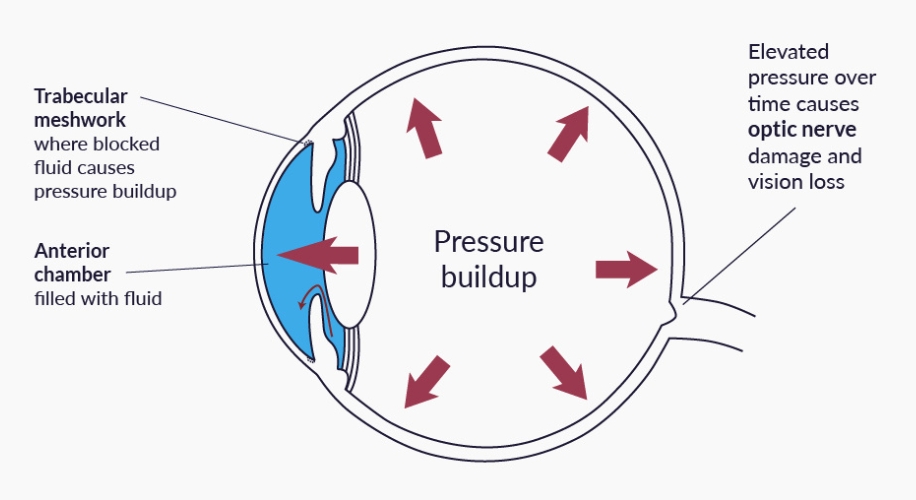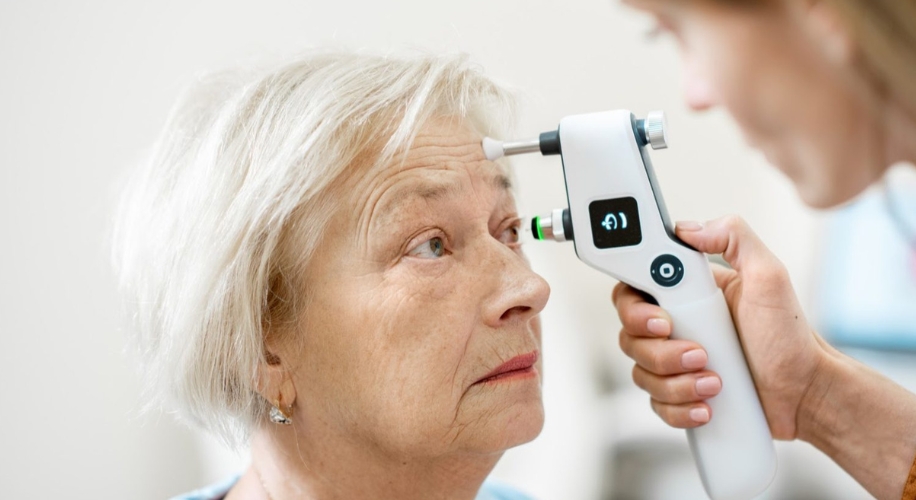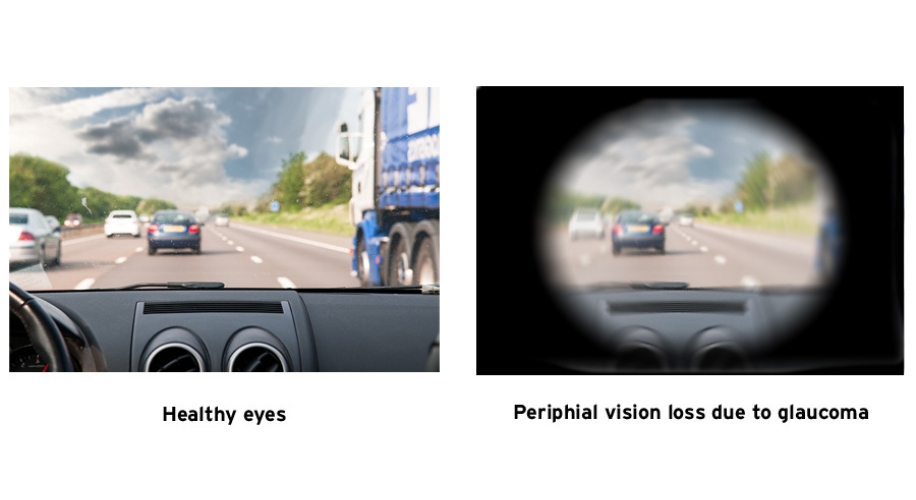Exploring Eye Pressure and the Eye Puff Test
Understanding Intraocular Pressure (IOP)
Intraocular pressure (IOP), commonly referred to as eye pressure, is the measure of the pressure inside the eye. It’s crucial for maintaining the shape of the eye and ensuring proper functioning of the optic nerve. This pressure, measured in millimeters of mercury (mmHg), is less related to systemic blood pressure, but is highly dependent on the influx and outflow of fluid from the structures in your eye. However, both high and low eye pressures pose risks to ocular health. High eye pressure, known as ocular hypertension, can lead to conditions like glaucoma, while low eye pressure may indicate hypotony or complications from eye surgery.

Photo from National Eye Institute
Methods of Measuring IOP
Various methods are available for measuring intraocular pressure, each with its own set of advantages and limitations:
- Air Puff or Non-Contact Tonometry: Most people are familiar with this dearly feared test that is commonly done as part of a comprehensive eye exam. This method involves a gentle puff of air directed onto the eye’s surface to measure IOP. The device measures the time it takes for the air puff to flatten a small area of the cornea, providing an estimate of intraocular pressure. While non-contact tonometry is quick and painless, it may produce slightly higher readings compared to other methods. Other contributing factors are eyelids and blink rate, which can cause inaccurate readings.
- Applanation (Goldmann and Tonopen): Goldmann applanation tonometry (GAT) is considered the gold standard for measuring IOP due to its accuracy and reliability. It involves applying a slight pressure to the cornea using a prism and measuring the amount of force needed to flatten a specific area of the cornea. Tonopen, another applanation tonometry device, provides similar results but is handheld and easier to use in certain clinical settings. Goldmann tonometry requires specialized training and equipment, making it more common in clinical settings. Applanation tonometry requires an eye-numbing eye drop and relies on patient compliance in sitting still for accurate readings.
- Rebound Tonometry (iCare): Rebound tonometry is gaining popularity for its accuracy and ease of use. It involves a small probe that gently taps the cornea, causing it to deform momentarily. By measuring the rebound movement, the device calculates intraocular pressure. This method is less invasive and may be preferred for certain patient populations, especially those who may be uncomfortable with the air puff or those who are wheelchair or bed-bound. Rebound tonometry is particularly useful in pediatric and geriatric populations, where positioning may be challenging.

Photo from EyeEffects
Normal Eye Pressure and Daily Variations
The normal range for intraocular pressure typically falls between 11 and 21 mmHg. But there are some considerations:
- While eye pressure between 9-11mmHg can also be considered normal, eye pressure of 8mmHg or below is considered hypotonous and increases risk of hypotony related eye conditions.
- Similarly, some pressures above 21mmHg can be considered normal, especially if corneal thickness, or pachymetry, is higher than average which causes an artificially high reading of eye pressure. Acute spikes or consistently high eye pressure can increase the risk of primary open angle glaucoma, a vision-threatening disease.
- Finally, although your eye pressure may fall into the “normal range” of IOP, there is a version of glaucoma called normal tension glaucoma, or normal pressure glaucoma, that can cause life-altering vision loss in the context of “normal” pressures.
However, it’s essential to consider that eye pressure can vary throughout the day, influenced by factors such as time of day, body position, and physical activity. While slight fluctuations are normal, consistent elevations in eye pressure may warrant further evaluation by an eye care professional to rule out conditions like glaucoma.

Photo from the American Optometric Association
Monitoring intraocular pressure is crucial for preserving eye health and detecting potential issues like glaucoma. The eye puff test, along with other tonometry methods, provides valuable insights into eye pressure levels and helps guide clinical management. Understanding the different methods of measuring IOP and their implications can empower individuals to take proactive steps in maintaining optimal eye health.




 Canada
Canada